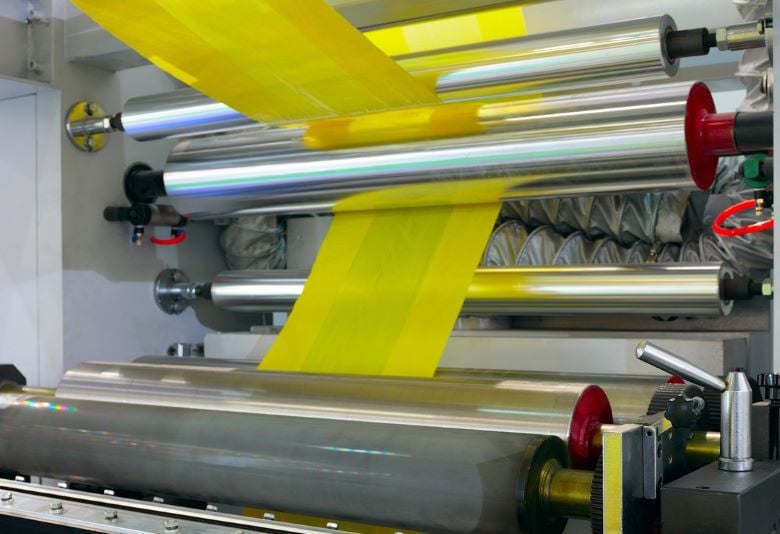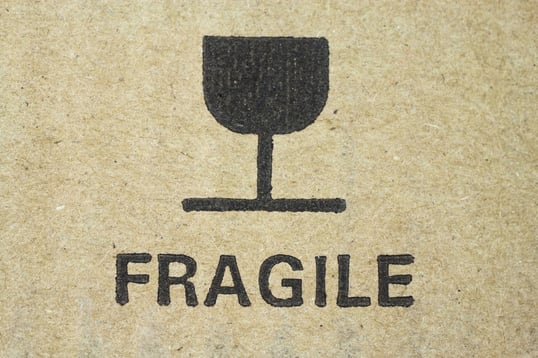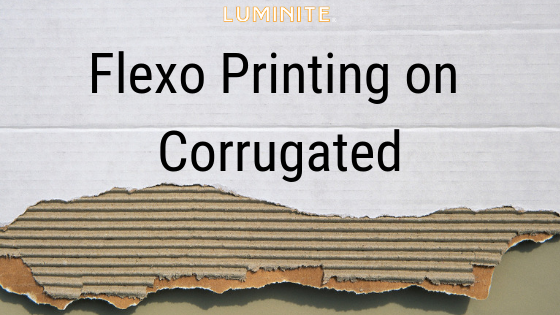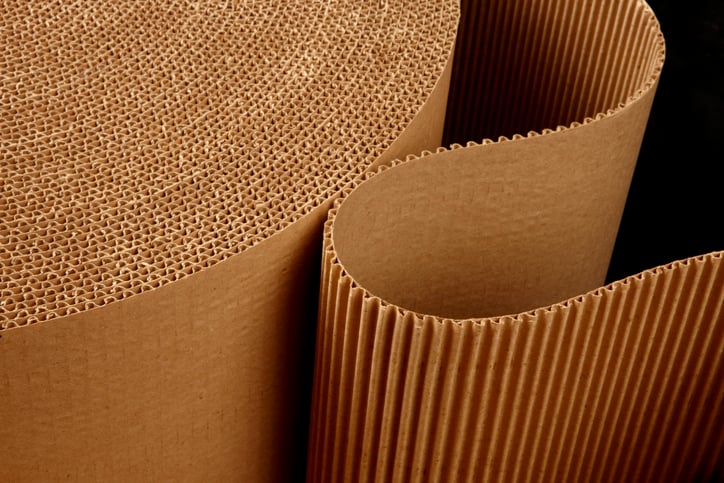Flexo: 3 Main Types of Printing Presses

Flexo printing can be useful for high-capacity print jobs. From low cost to quick turnaround times - not to mention the ability to change the design of a potato chip bag or cereal box to highlight a new movie or mascot - flexo printing is a widely relied upon technique for commercial packaging.
When working with a print house to fulfill your order, there are three different types of flexo presses that will likely be used to create your products. Choosing the right machinery for the job means balancing quality and functionality with the substrate, ink, and other considerations.
While each type provides high-quality printing, it helps to understand the benefits of the trio of presses and potential defects that can occur during printing.
A Look at the 3 Types of Printing Presses for Flexo Printing
Flexo printing is popular for food packaging, beverage labels, and corrugated cardboard.
There are three main press design types for flexographic printing:
- Central impression press
- In-line press
- Stack press
1. Central Impression (CI) Press
The setup of a CI flexo machine is sometimes compared to the planets’ path around the sun, as the stations are set up around the cylinder. This particular setup is ideal for large jobs as the machine is set up for increased capacity.
The defining feature of the CI press is the impression cylinder, which is the central point of the press layout. As the name suggests, the substrate is fed around the single steel drum impression cylinder at the center.
This cylinder supports the substrate during the printing process, while the substrate in other presses is left unsupported in between printing units. The printing plates are located on both sides of the web and print in a mirror image of each other.
The CI printing machine works on various substrates and is particularly useful for wide widths. A typical CI press is a six-color press. The press maintains a consistent level of pressure with low vibration, which in turn provides reliable prints over the course of a high-capacity run.
The main benefits of the CI press include
- Support for a wide range of substrates due to the drum-type design
- Consistent results for high print quality
- Easy modification for lamination or other post-press processes
- Ability to print on both sides of the substrate simultaneously
How common is a CI press?
The Central impression flexo printing machine can be found in print houses where manufacturing bags and pouches are the main focus. That’s because CI flexo presses provide quality printing for flexible substrates, used for food packaging and for other purposes.
2. In-line press
An in-line press is the most common flexo press in print houses handling commercial product packaging. It also handles a variety of substrates and involves six components.
As the name suggests, this press has stations in a sequential line rather than a circular configuration. The lineup is handled along a horizontal line instead of vertically (more on that later).
The in-line press can seamlessly handle a large run of prints. The substrate is pressed between the image carrier and the impression cylinder, with sufficient pressure to maintain ink distribution in a balanced manner.
The color variety available is an advantage of using the inline press. The average availability is eight colors, but a maximum of 20 can be used, depending on the setup.
3. Stack press
The stack press is set up with stations arranged vertically. Most stack-type flexographic printing presses average between six and eight decks. They can be set up to allow both sides of a substrate to be printed during the same trip through the stack-type flexo press. However, the stack flexo press is less effective for thinner substrates, as it fails to hold a high level of precision.
While the stack press is not as precise as some other types, it can be more efficient. The substrate can move from station to station quickly because the stations are arranged vertically. This type of flexo press is often used for printed materials that do not require a high level of precision, such as corrugated cardboard or chipboard.
The main advantage of the stack press is its high efficiency for certain substrates. When working with thicker substrates, this type of flexo press is also very advantageous as it provides a quick way to move from station to station.
Interested in Learning More?
For a more in-depth look at the use of these three printer types, consider this trilogy:
1. Breaking Down an In-Line Printing Press
2. Breaking Down a Central Impression Printing Press
3. Breaking Down a Stack Press
Flexo Printing Considerations: Quality, Substrate, Location
Different substrates present unique challenges. 
Take printing on corrugated cardboard for example. The biggest challenge with this material is presenting a full image with no defects. While there is no specific corrugated printing
press, there are a variety of presses that successfully print on corrugated substrates. There are some printing techniques that aren’t possible on corrugated cardboard, including tints and gradients. However, premium print quality is still possible with the right ink and press setup.
In many print houses, if the substrate or print quality is not the concern, the focus is the physical layout of the location and the best printing press to fit that space.
The expected print run is also key in determining the best press for your print house.
Types of Printing Presses: Find the Right Fit
CI, in-line, and stack presses are competitive options for your printing business. It is important to have an idea of the space available and the printing priorities for your product, in order to make the right choice.
Ready to Learn More, or Become a Contributor?
Check out the resources and guides available here our Flexo 101 Resource Hub for more.
(Editor's Note: This blog was originally published in January 2023 and has been updated to reflect current information.)




